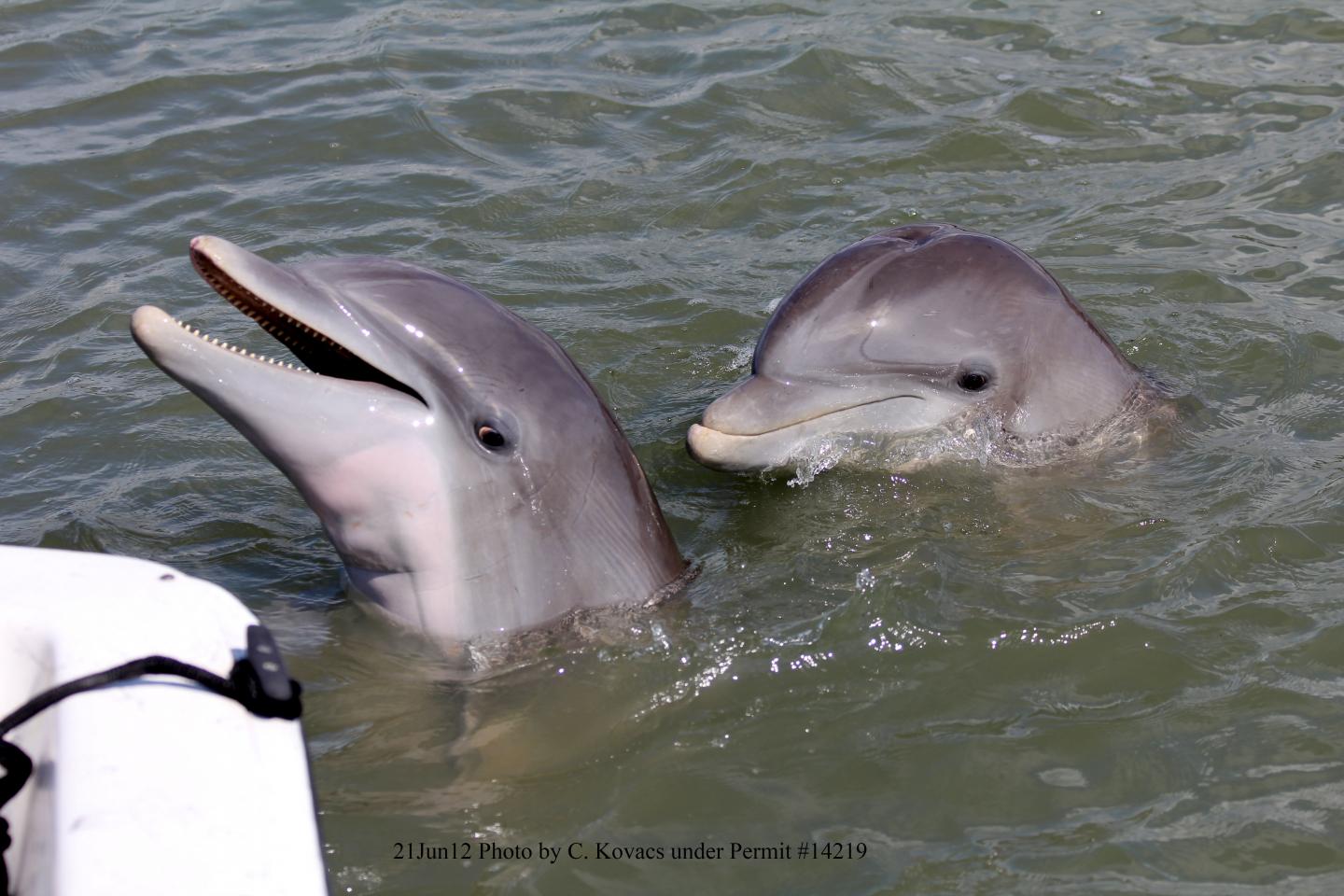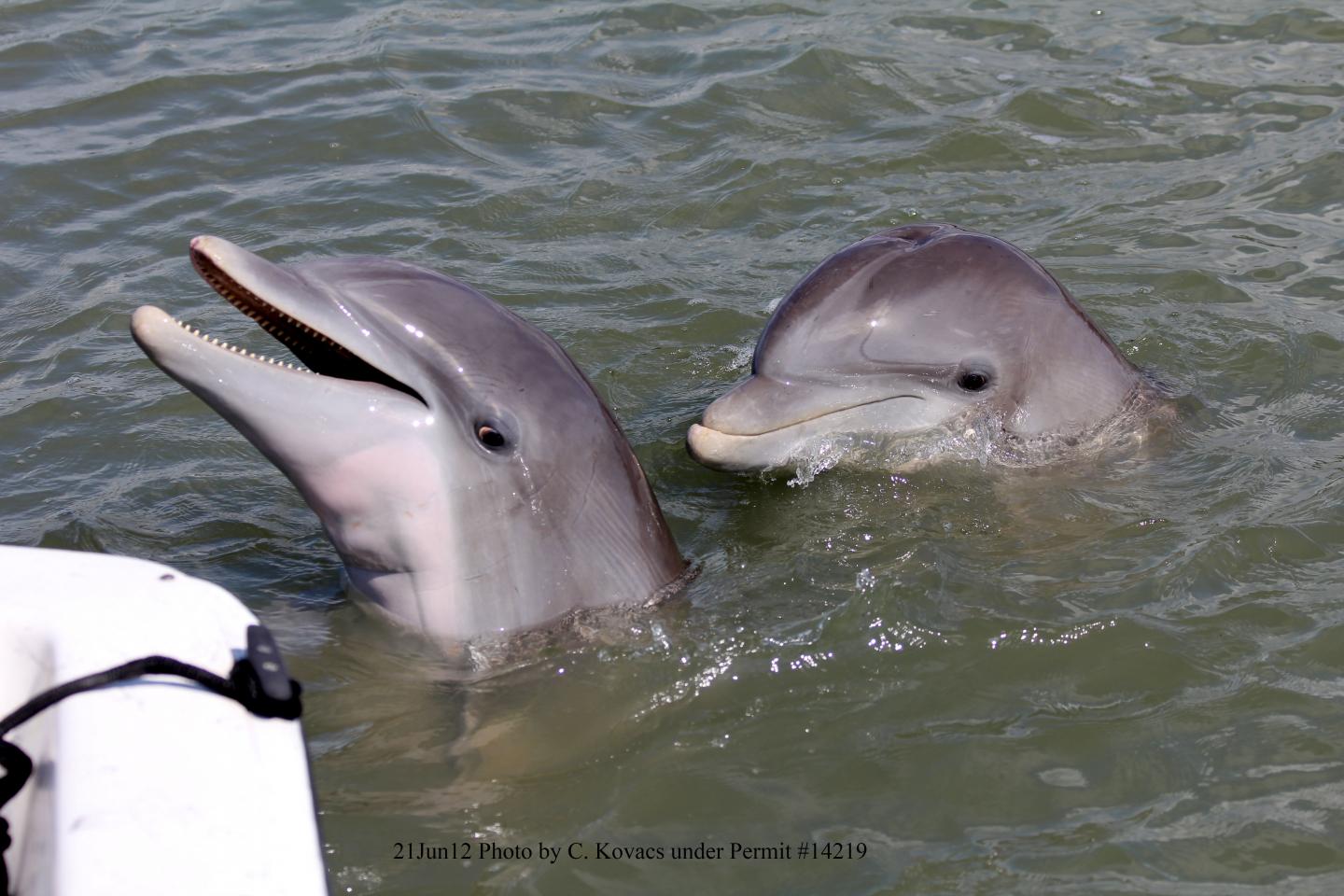
Credit: Carolyn Kovacs
Bottlenose dolphins near Savannah, Georgia are split into social groups according to whether or not they forage behind commercial shrimp trawlers, according to a study published February 1, 2017 in the open-access journal PLOS ONE by Tara Cox from Savannah State University, USA, and colleagues.
Dolphins often interact with humans in the waterways around Savannah, Georgia, including begging, provisioning or scavenging for food. Dolphins that follow shrimp trawlers eat fish caught in or stirred up by the nets, as well as bycatch discarded from the trawler. To investigate any social ramifications of this human-related foraging behavior, the researchers did photo-identification surveys of non-calf dolphins in the estuarine waterways near Savannah during the summers of three consecutive years. Focusing on 137 dolphins identified on at least six field days, the researchers determined if they begged or followed trawlers, and estimated how often individual dolphins were together based on statistical analysis of groups observed.
The researchers found that the dolphins were divided into six social clusters, half of which followed shrimp trawlers and half of which did not. In contrast, begging and non-begging dolphins were spread across the clusters. This suggests that shrimp trawler foraging may be a socially-learned behavior but how the solitary activity of begging is learnt is less clear.
"Bottlenose dolphins interact with humans, which puts them at risk of injury or death," says co-author Robin Perrtree. "Risky behaviors, such as begging at recreational boats and interacting with shrimp trawls, are not the same and should not be treated as comparable by researchers and managers."
###
In your coverage please use this URL to provide access to the freely available paper: http://dx.plos.org/10.1371/journal.pone.0170151
Citation: Kovacs CJ, Perrtree RM, Cox TM (2017) Social Differentiation in Common Bottlenose Dolphins (Tursiops truncatus) that Engage in Human-Related Foraging Behaviors. PLoS ONE 12(2): e0170151. doi:10.1371/journal.pone.0170151
Funding: Boat time was provided by the Marine Sciences Program at Savannah State University CJK RMP TMC. Support was provided by (NSF GK12; award 0841372) CJK; (NSF EDGE; award GEO-0194680) TMC RMP; the (NOAA Office of Education's Educational Partnership Program; award NA05OAR4811017) RMP; (Department of Education, Title VII award P382G090003) CJK RMP TMC; and the Oak Foundation TMC RMP.
Competing Interests: The authors have declared that no competing interests exist.
Media Contact
Beth Jones
[email protected]
############
Story Source: Materials provided by Scienmag





